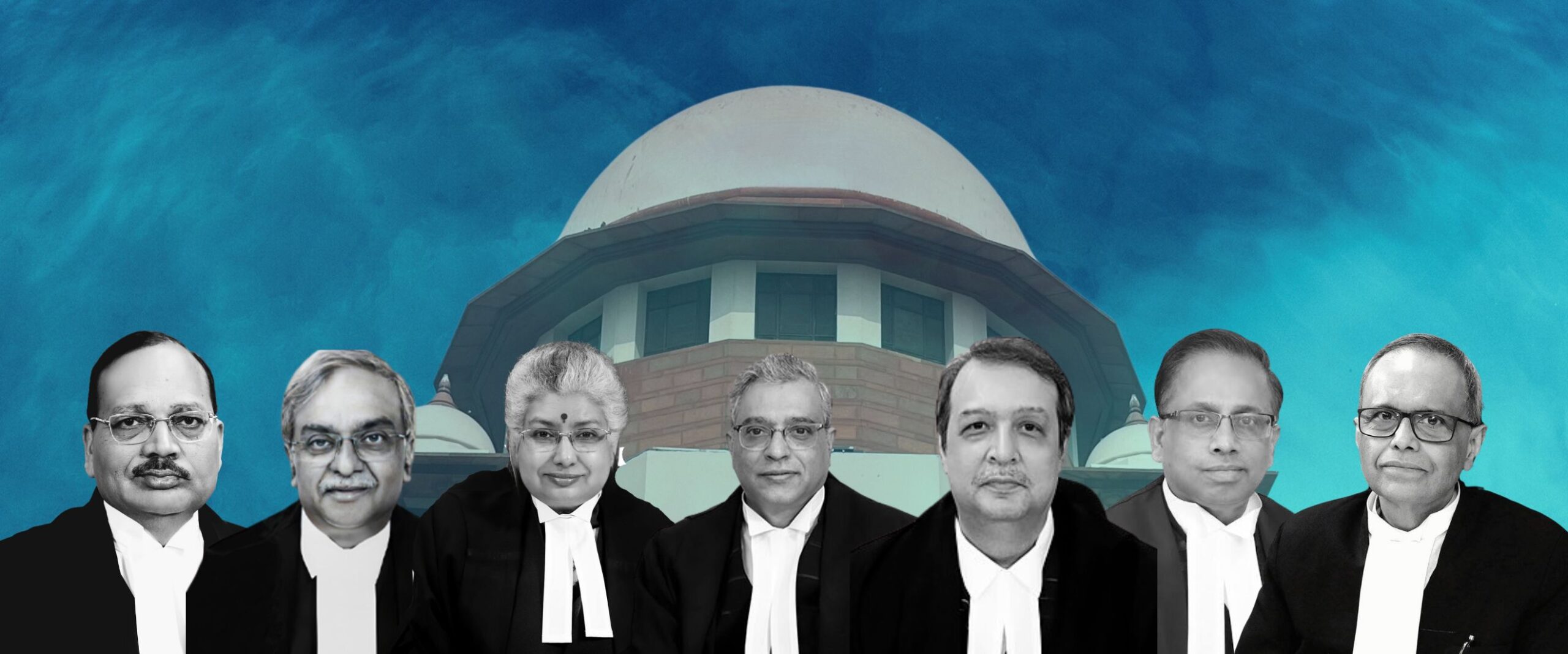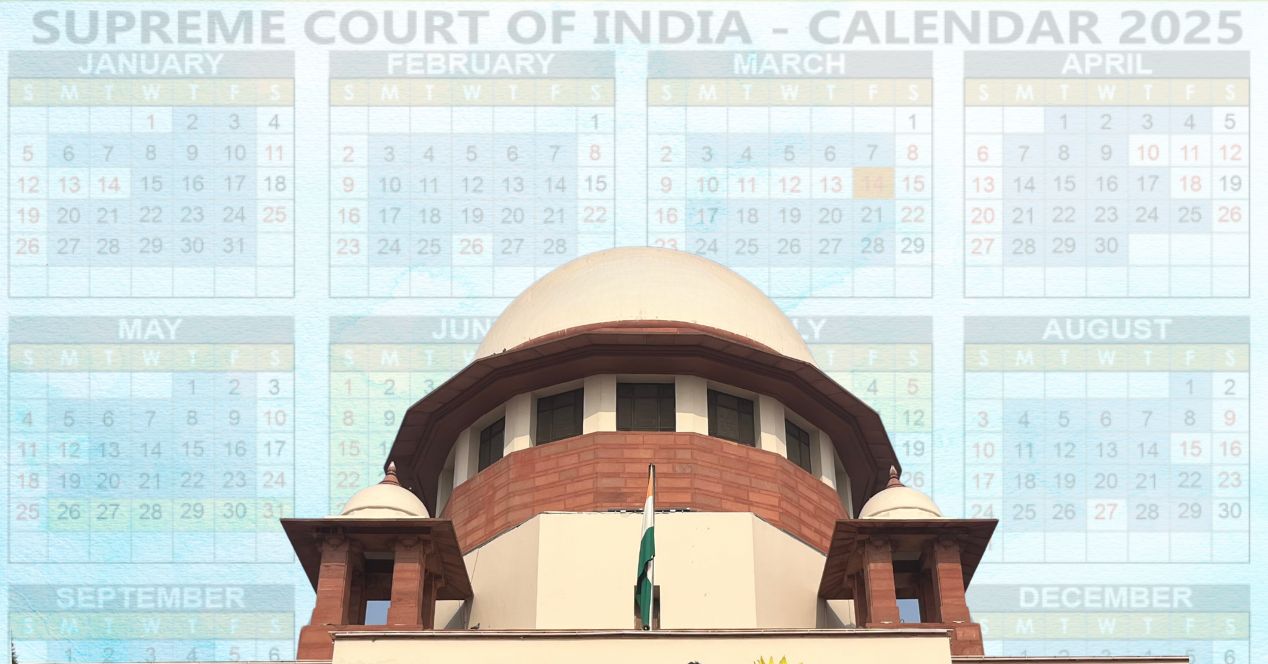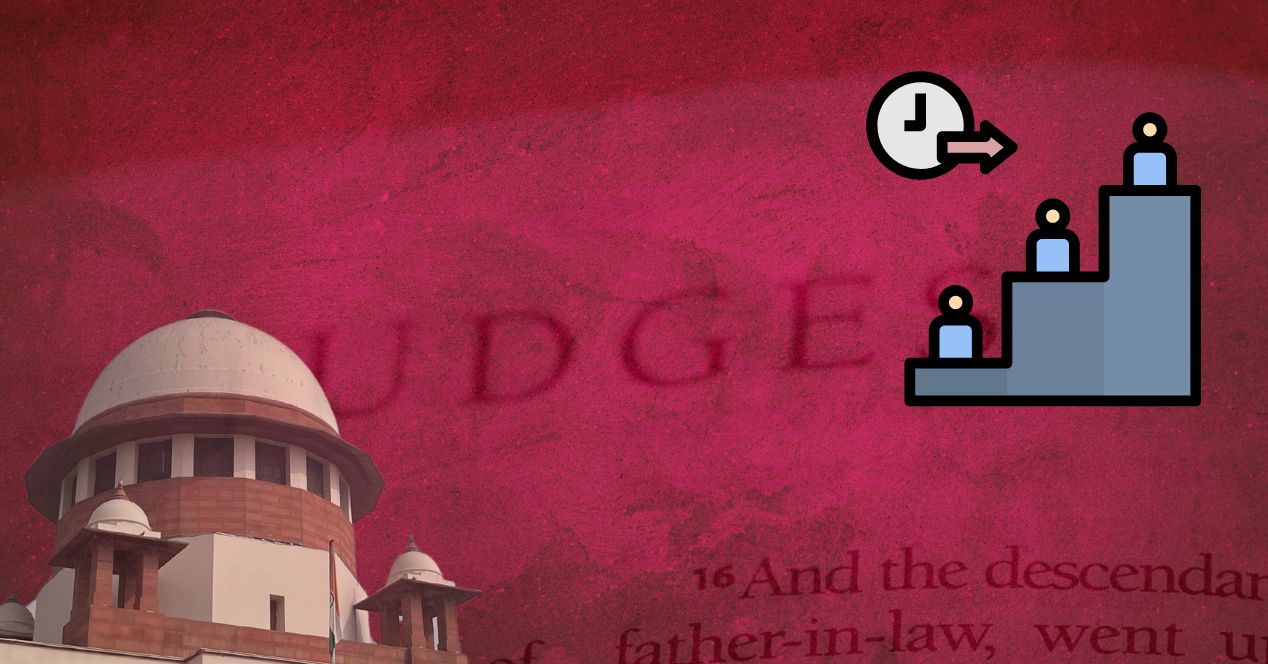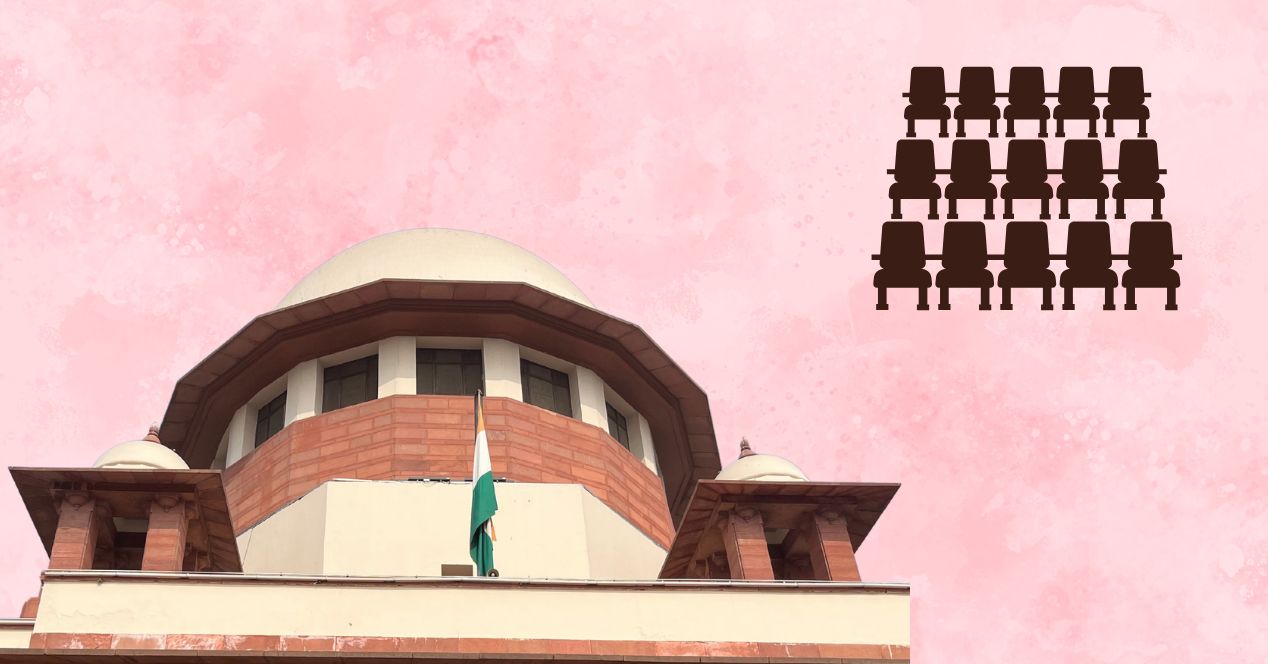Court Data
Average tenure of CJIs past, present and future: What does the data tell us?
If the seniority principle is followed, the average tenure of the next seven Chiefs will drop to 1.4 years

The Supreme Court is currently led by its 52nd Chief Justice, B.R. Gavai, who assumed office on 14 May 2025. He will serve a tenure of six months before his retirement on 23 November 2025.
According to Article 124, the Chief Justice retires at the age of 65. Per convention, the seniormost judge of the Supreme Court becomes the Chief. Therefore, the date of a judge’s elevation to the Supreme Court determines the length of their tenure and if they are in line to become Chief Justice in future. A longer CJI tenure is usually indicative of institutional stability and longevity.
If the seniority principle is followed, the top court will see seven more Chiefs after CJI Gavai’s retirement till Justice Joymalya Bagchi assumes office for a tenure of a little more than four months in 2031.
In this post, we examine the tenures of all the Chief Justices of India so far and assess the tenures of the next seven Chief Justices.
Average tenure of 52 Chief Justices is 1.5 years
Figure 1 below traces the tenure of all the Chief Justices of India from CJI H.J. Kania in 1950 to CJI Gavai in 2025.
The statistics speak for themselves. The average tenure of all the CJIs of India so far is 1.5 years. As of now, 36 judges fall below this average, including CJI Gavai. After Chief Justice S.H. Kapadia, who retired in 2012 after a tenure of 2.4 years, only CJI Chandrachud had a tenure which crossed the average tenure benchmark. Only 16 judges crossed the average mark. This means that the higher average can be attributed to a few judges with exceptionally long tenures.
Chief Justice Y.V. Chandrachud served the longest tenure of 7.4 years and CJI K.N. Singh served the shortest tenure of 17 days.
In the recent past, CJI D.Y. Chandrachud served the longest tenure of 2 years. Justice U.U. Lalit served a short tenure of 2.4 months. The average of all CJI tenures, including Justice B.R. Gavai, gives us 17.6 months in office.
Average tenure of next seven CJI’s will drop by almost a month
Figure 2 below gives the tenures of the next seven Chief Justices after CJI Gavai’s retirement.
In the next seven years, after Justice Gavai’s retirement till Justice Bagchi’s taking over the CJI-ship, the average of 1.5 years in office of all the CJIs would drop by a month to 1.4 years. The average tenure of the next seven Chief Justices would be 10 months in office. However, this value would be misleading if not understood with the stark variance of tenures.
The upcoming Chief Justices of India are expected to have widely varying tenures ranging from just over a month to more than two years. Justice J.B. Pardiwala is projected to serve the longest term in office, with a tenure of approximately 2.3 years. He is followed by Justice Surya Kant with a 1.2-year tenure and Justice K.V. Viswanathan with 9.5 months. These longer tenures could enable them to preside over significant constitutional benches and provide much-needed administrative continuity.
In contrast, Justice Vikram Nath will serve a term of 7.49 months. Justice P.S. Narsimha for 6 months and Justice Bagchi for 4.4 months. Justice B.V. Nagarathna, who is slated to become India’s first woman Chief Justice in 2027, will serve a very short tenure of 36 days.
Why does tenure length matter?
“It takes them 1.5 to two years to understand how the Court functions here because it is completely different from the High Courts,” but just as they settle in, “they are looking at their retirement,” Justice L.N. Rao had said while pressing that a Chief Justice must serve a tenure of at least eight, if not 10 years, in office. The Supreme Court has time and again dismissed pleas to increase judges’ retirement age, stating the Parliament’s prerogative under Article 124.
Short tenures can be used to set the tone, send strong institutional signals, or prioritise urgent corrections. CJI Sanjiv Khanna, Lalit and even Gavai’s tenure is an example of that. However, more time in office would have meant more time to sit through actual administrative reforms.
That is not to say short tenures are entirely without value. During his 2.5-month tenure, CJI Lalit listed 27 cases before Constitution Benches. Though only two Constitution Bench cases were decided within his brief tenure, the shift was a break from tradition, where only 10 Constitution Benches had sat from 2000 to his appointment. The majority of these cases were taken up and decided during the tenure of his successor, CJI Chandrachud.
But these are often short-term course corrections, not long-haul reforms. Alok Prasanna notes that short CJI tenures do not allow CJIs to properly focus on the multiple aspects of their roles, leading to difficulty in implementing long-term changes. In December 2024, Union Law Minister Arjun Ram Meghwal informed the Rajya Sabha that there were no proposals to increase the retirement ages of Supreme Court and High Court judges.
The seniority rule does not necessarily curb political interference. Seniority among Supreme Court judges is based on the date of their appointment, not their birth. Therefore, strategic and timely appointments can influence who becomes the CJI. Recent collegium recommendations have opened up a new CJI-in-line criteria for elevation.
As arguments about the collegium’s lack of transparency persist, the facts provide a powerful point of departure. At this point, it becomes important to ask: Is the churn in CJI tenures truly necessary, or does it stand in the way of long-term reform? The Supreme Court may promise continuity on paper, but the reality often reflects revolving leadership with limited time to leave a lasting mark.




